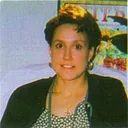Rural Practice Myths Busted
The phrase "rural medical practice" may bring images to mind of cows and silos, a primitive office with archaic trappings and your services paid for with a carton of eggs or a bushel of produce (none of which are necessarily off-putting). Myths about rural practice are just that – myths. It would be a shame to let those myths keep you away from what can be a rich, fulfilling experience.

Susan Montgomery/123RF.com
Locales designated as “rural” can be any location not clearly identified as urban or suburban, so there’s no consistent description for a rural area or practice setting. I’ve covered the office on Mackinac Island, just off Michigan's upper peninsula. It has a radius of 8 miles, with no motor vehicles allowed (except a rarely used ambulance). It’s reached by ferry – most of the time. But when Lake Huron freezes, the ferry can’t run until the spring thaw. When a patient came in having a myocardial infarction, we loaded her on a motorboat and raced to the mainland. If she had coded, there was nothing but ingenuity and prayer to manage the situation. If it had happened in January, the outcome could have been very different.
A couple of weeks later I was making the 1-day, twice-a-year visits to the most remote of the remote villages in Alaska, many of which are accessible only by bush plane (and not at all in the winter). Herds of caribou reign in the deep valleys between the mountain ranges, where no human has been known to set foot.
There are many similarities between urban and rural practice. You’ll treat the same conditions and diseases in rural medicine that you see in the city, such as diabetes and hypertension. You’ll face the same challenges as your urban counterparts, such as increasing workload, falling reimbursement, and access to specialized care.
There are also significant differences between rural and urban practice, with the rural, I think, on the more favorable and fulfilling side.
Over the last couple of decades, it seems that more and more family doctors are relinquishing more and more of the broad scope of family medicine that makes the specialty so attractive and meaningful. Obstetrics is the most obvious (and the saddest) loss. There was a time when it was assumed that family doctors deliver babies. Now, family doctors who practice obstetrics are getting harder to find. The continuous relationships which occur across generations are one of the most precious rewards of practicing medicine. A rural physician will find her/himself delivering babies of parents whom s/he delivered. Give that up? I don’t get it. I don’t want to get it.
Many family medicine specialists are eliminating procedures from their scope of practice. Sigmoidoscopies, colonoscopies, EGDs, setting and casting fractures, suturing lacerations, biopsies, counseling, vasectomies, appendectomies, x-rays, ultrasounds, fun stuff. I’m not relinquishing any territory, with one exception – circumcision. If I never do another circumcision in my life, it’ll be too soon.
It would be a shame to let myths dissuade you from choosing rural practice. It isn’t true that rural doctors can’t know enough. Common things are common, and those constitute the bulk of practice. With current technology, a family doc is never alone. Consultants can be reached within minutes and can even see a patient with you!
Rural doctors can and do have lives. Even working many hours, flexibility in a schedule means you can participate in family events and attend your kids’ soccer games. It’s unlikely that you’ll have patients calling you all night. They know you’re there and will be there when they need you, so they’ll take care of you and your family, too, holding off on night-time calls that can wait.
Rural primary care physicians, on average, earn slightly more than urban primary care physicians. They may be paid less per service, but they work 3-5 more hours per week and perform more of the higher-compensated procedures more economically than urban subspecialists.
It can be rewarding to set the tone for healthcare for an entire community. Your legacy can be great.
Related Posts
